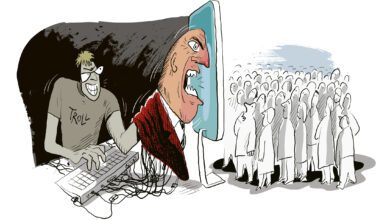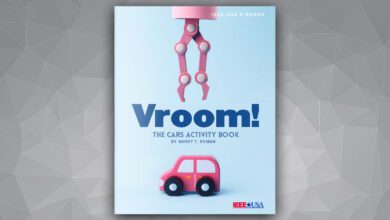
With twenty-three patents and seventeen more filed, Daniel Beveridge has a wealth of experience on the ups and downs of the innovation journey. He has pivoted through moments when a project’s trajectory collides with reality. In his current role as the director of VMware’s internal accelerator, he also now has the experience of helping coach and guide other inventors through project pivots. Whether it’s finances, competing projects, limited resources, or changes in the technological terrain, Daniel is familiar with the wide variety of issues that can reset innovation plans. So during his recent ‘Career: Reset’ interview, we made full use of this knowledge and experience as he passed on some tips that have been vital for him along his path.
Don’t get tunnel vision
While Daniel had an early interest in technology, he wanted to pursue a “renaissance man” education. To this end, he took a unique path in college by studying religion and philosophy. It trained his brain to think in new ways and come at problems from a different lens. During our interview, he noted that studying various complex belief systems taught him that people could become so invested in their deeply held views that they start to view their perspective as absolute truth and stop being open to ideas or data points that take them out of their comfort zone. To avoid putting their sense of meaning at risk, they may stop asking questions and only consider their beliefs from the limited lens of their experiences. He has seen the same hold true when it comes to technology.
One example of this that many of us have experienced is how, in this past year, there have been some tremendous technological leaps forward. This acceleration is because this pandemic forcibly changed our lens and made us reconsider how we were doing business. We suddenly realized that what we previously considered to be unfeasible changes were tenable, and likely to become normative going forward. Now, what would happen if we were able to recognize our assumptions without the impetus of a pandemic? Innovation demands that we find these gaps between our beliefs and the emerging reality we find ourselves in.
Plan with the endgame in mind
Daniel credits chess with helping him think strategically, noting that the game taught him to think not just of the next step, but several steps ahead, processing a number of possible paths and outcomes in parallel. He said, “It’s a matter of looking at where profound new points of leverage are emerging in the technology landscape, charting a path toward where you believe the new efficiencies will manifest, and investing in expertise before those major changes have become ‘risk-free’ career choices.’ His experience has taught him to identify strategic directions, but plan several paths to the destination within the shifting landscape of emerging technology trends. These thought processes help us to be prepared for unexpected changes, while doing the necessary risk assessments along the way. The goal is to keep pace with the ever-shifting technological landscape, keeping ourselves on a solid footing where we are best positioned to seize opportunities or pivot when career complications arise.
This chess mindset is what helped him turn a reset moment into a springboard for his career. After 9/11, available positions in his field were scarce, so he landed a job doing IT for a mortgage company. However, because he was reading the terrain of technology, he decided to take a futuristic perspective and embraced virtualization, building out the company’s implementation in five states. That direction was one of the most progressive applications of virtualization at a time when people felt it was a technology best reserved for development testing. By identifying the opportunity for growth in virtualization at its start, he was able to establish himself as one of the initial experts in this field and an early leader in Virtual Desktop technology. And because technology is always growing and changing, this is a repeating cycle. Any time you can read the terrain and get onboard at the beginning of a tech trend, you can become one of the subject matter experts who helps write the playbook before the crowd catches up.
Accept the school of hard knocks
Finally, the last tips he passes on to other innovators are those that he learned from the most demanding teacher: experience. Daniel knows firsthand how disheartening it can be as you see your original innovation plan fall apart. However, many times, a down-scoped or recalibrated version can still be a success. When the trajectory of a project is changed, he reminds fellow innovators that the full objective does not need to be fulfilled immediately. If a new venture reaches an initial phase where it can generate value then that is an important victory that creates the traction needed for realizing the broader vision. The initial traction can act as a critical proof point to convince naysayers or skeptics, leading to additional investment in the idea and ultimately in the grander results innovators may have imagined at the beginning of their journey. So, with patience, and some humility, we can understand that a downsized project can just be a stepping stone that allows us to get closer to the realization of a bold project in its entirety.
Daniel’s journey as an innovator may have a unique foundation, but his approach to innovation has born fruit in a prolific and diverse body of intellectual property, bold new technologies in product, and now, the ability to mentor and guide the next generation of innovators as leader of VMware’s xLabs incubation program. As we encounter our own pivot moments, it can help to consider these different strategies as we troubleshoot our path forward. Can we transform our challenges into inspirations? Perhaps we need to read the terrain and determine what the long-term view is. We may need to accept curtailment of the vision now and circle back down the road as we can pursue our vision. Wherever your career crossroads may take you, know that you are in the company of innovators and inventors, troubleshooters and trailblazers. As Steve Jobs said, “Here’s to the crazy ones, the misfits, the rebels, the troublemakers, the round pegs in the square holes … the ones who see things differently — they’re not fond of rules, and they have no respect for the status quo.” You are in good company, my friend!
Jacquelyn Adams is a storyteller and an award-winning CEO. She lives in a world of constant exploration, whether it’s summiting Mount Kilimanjaro, vlogging about the future of work… or discovering how she’d do in a chocolate eating contest (answer: last place). Find more of her Lessons on Leadership articles here or connect with her on LinkedIn here.






